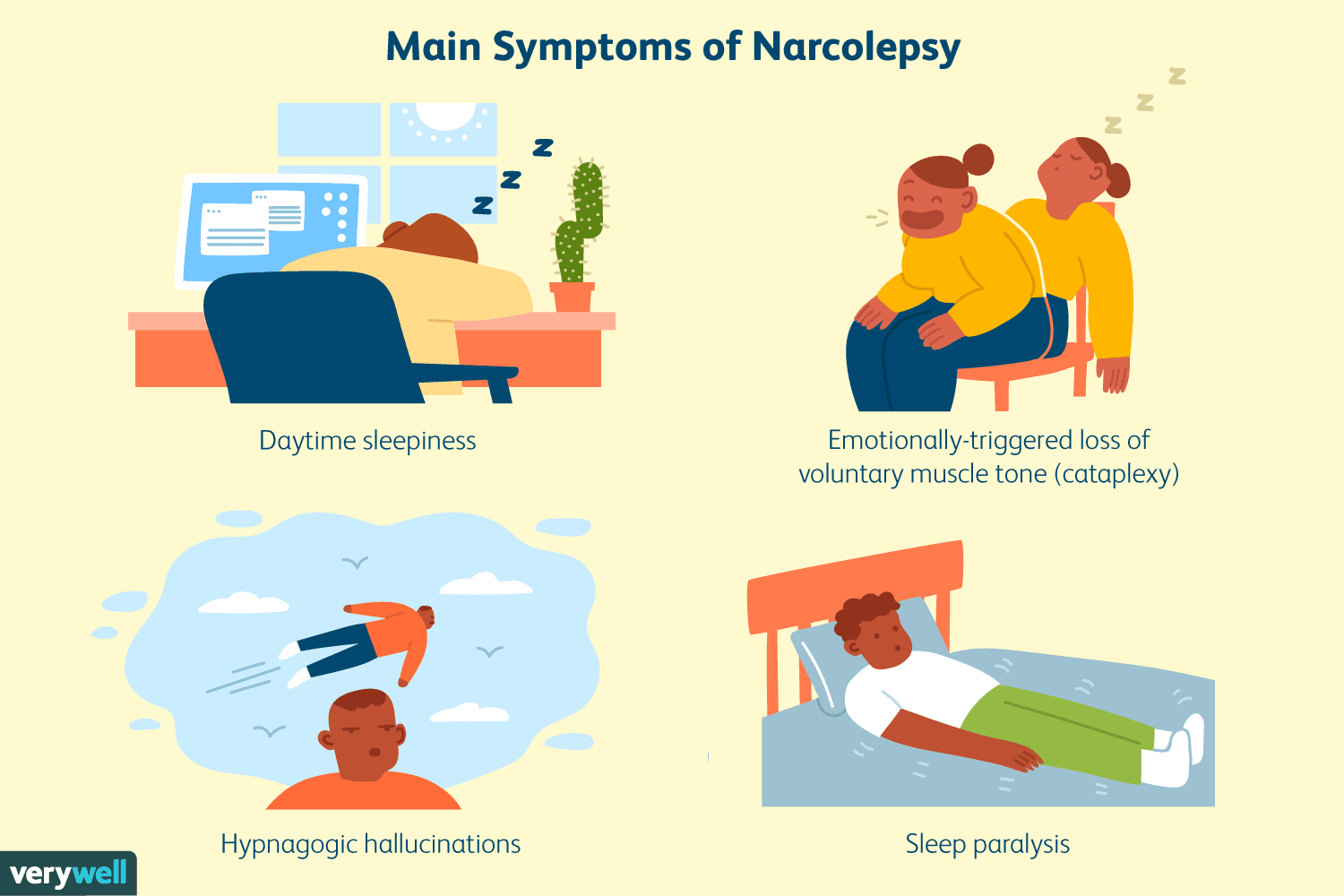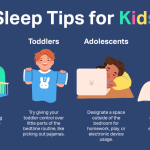Have you ever heard of cataplexy? It’s a fascinating phenomenon that is closely related to narcolepsy. But what exactly is cataplexy, and how does it tie into this sleep disorder? Well, get ready to dive into the world of sleep science as we explore the intriguing connection between cataplexy and narcolepsy.
Cataplexy is a condition characterized by sudden muscle weakness or paralysis, often triggered by strong emotions such as laughter, excitement, or anger. Imagine feeling a wave of weakness wash over you, causing your knees to buckle and your body to slump involuntarily. It’s like experiencing a temporary loss of muscle control, almost as if your body is playing an unexpected prank on you. This peculiar phenomenon is often seen in individuals with narcolepsy, a neurological disorder that affects the brain’s ability to regulate sleep-wake cycles. In fact, cataplexy is considered one of the hallmark symptoms of narcolepsy, along with excessive daytime sleepiness, sleep paralysis, and hallucinations. So, if you’re curious to learn more about cataplexy and its fascinating relationship with narcolepsy, keep reading to uncover the secrets of this peculiar sleep disorder duo.
Cataplexy is a sudden loss of muscle tone triggered by strong emotions, such as laughter or surprise. It is a key symptom of narcolepsy, a sleep disorder characterized by excessive daytime sleepiness and sudden sleep attacks. While not everyone with narcolepsy experiences cataplexy, it is estimated that around 70% of people with narcolepsy do. Cataplexy occurs due to a lack of a neurotransmitter called hypocretin in the brain, which regulates wakefulness and muscle control. Understanding the relationship between cataplexy and narcolepsy is crucial for effective management and treatment of these conditions.

Understanding Cataplexy and Its Connection to Narcolepsy
Cataplexy is a neurological condition characterized by sudden and temporary loss of muscle tone or control. It is often associated with narcolepsy, a chronic sleep disorder. Cataplexy episodes can range from mild muscle weakness to complete muscle paralysis, and they are typically triggered by strong emotions such as laughter, excitement, or anger.
Although cataplexy is most commonly associated with narcolepsy, it can also occur in isolation without the presence of other narcoleptic symptoms. However, it is important to note that cataplexy is a hallmark symptom of narcolepsy type 1, also known as narcolepsy with cataplexy. This form of narcolepsy is characterized by excessive daytime sleepiness, sudden and uncontrollable sleep attacks, sleep paralysis, and hallucinations.
The Mechanism Behind Cataplexy and Narcolepsy
The exact cause of cataplexy and narcolepsy is not fully understood, but researchers believe that it is related to a deficiency of a neurotransmitter called hypocretin, also known as orexin. Hypocretin is produced by a group of cells in the brain called the hypothalamus, which regulates sleep, wakefulness, and other important functions.
In individuals with narcolepsy with cataplexy, there is a significant reduction in hypocretin levels due to the destruction of the hypocretin-producing cells in the hypothalamus. This loss of hypocretin leads to the disruption of the sleep-wake cycle and the occurrence of various symptoms, including cataplexy.
The Impact of Cataplexy on Daily Life
Living with cataplexy can be challenging, as it can significantly impact an individual’s quality of life. The sudden loss of muscle control during cataplexy episodes can result in falls, accidents, and injuries. This can lead to fear and anxiety, causing individuals to limit their activities and social interactions. The emotional impact of cataplexy should not be underestimated, as it can lead to feelings of embarrassment, shame, and frustration.
In addition to the physical and emotional effects, cataplexy can also affect one’s professional life. The episodes of muscle weakness or paralysis can make it difficult to perform tasks that require physical strength or coordination, potentially impacting job performance and career opportunities.
Diagnosis and Treatment of Cataplexy
Diagnosing cataplexy involves a comprehensive evaluation of an individual’s medical history, symptoms, and sleep patterns. A sleep study called a polysomnogram may be conducted to assess sleep architecture and identify any abnormalities. Additionally, a multiple sleep latency test (MSLT) may be performed to evaluate daytime sleepiness and the presence of rapid eye movement (REM) sleep during naps, which is a characteristic feature of narcolepsy.
Once cataplexy is diagnosed, treatment options aim to manage the symptoms and improve overall quality of life. The primary treatment for cataplexy is the use of medications such as selective serotonin reuptake inhibitors (SSRIs), tricyclic antidepressants, or sodium oxybate. These medications help regulate neurotransmitter levels in the brain, reducing the frequency and severity of cataplexy episodes.
Lifestyle Modifications for Managing Cataplexy
In addition to medication, certain lifestyle modifications can help individuals better manage their cataplexy symptoms. These may include:
- Establishing a regular sleep schedule and practicing good sleep hygiene
- Avoiding triggers that can induce cataplexy episodes, such as intense emotions or sleep deprivation
- Engaging in stress-reducing activities, such as yoga or meditation
- Creating a safe environment at home and work to prevent injuries during episodes
It is important for individuals with cataplexy to work closely with their healthcare providers to develop a personalized treatment plan that addresses their specific needs and lifestyle.
Additional Resources for Cataplexy and Narcolepsy
For more information on cataplexy and its connection to narcolepsy, the following resources can be helpful:
- Narcolepsy Network – a non-profit organization dedicated to providing support and education for individuals with narcolepsy and cataplexy
- Narcolepsy Network Online Community – an online forum where individuals with narcolepsy and cataplexy can connect, share experiences, and find support
- National Sleep Foundation – a reliable source of information on various sleep disorders, including narcolepsy and cataplexy
By accessing these resources and working closely with healthcare professionals, individuals with cataplexy and narcolepsy can better understand and manage their condition, leading to improved quality of life.
Key Takeaways: What is cataplexy, and how is it related to narcolepsy?
- Cataplexy is a sudden loss of muscle tone triggered by strong emotions.
- It is a symptom of narcolepsy, a neurological disorder characterized by excessive daytime sleepiness.
- During cataplexy episodes, individuals may experience muscle weakness, slurred speech, or even collapse.
- Cataplexy is caused by a lack of a neurotransmitter called hypocretin in the brain.
- Treating narcolepsy with medications can help manage cataplexy episodes and improve overall quality of life.
Frequently Asked Questions
What is cataplexy?
Cataplexy is a medical condition characterized by sudden and temporary loss of muscle tone or muscle weakness. It is often triggered by strong emotions such as laughter, excitement, or fear. During an episode of cataplexy, a person may experience a range of symptoms, including drooping of facial muscles, slurred speech, difficulty in breathing, and even complete collapse. These episodes can last from a few seconds to several minutes and can vary in frequency and severity from person to person.
How is cataplexy related to narcolepsy?
Cataplexy is strongly associated with narcolepsy, a chronic sleep disorder. Narcolepsy is characterized by excessive daytime sleepiness, sudden and uncontrollable episodes of falling asleep, and disrupted sleep patterns. Around 70-80% of people with narcolepsy also experience cataplexy. Cataplexy is considered one of the hallmark symptoms of narcolepsy and is caused by the same underlying neurological dysfunction. Both conditions are believed to be caused by a deficiency of a neurotransmitter called hypocretin, which regulates wakefulness and sleep.
What triggers cataplexy?
Cataplexy is most commonly triggered by strong emotions, particularly positive emotions such as laughter, joy, or excitement. However, it can also be triggered by negative emotions such as anger, fear, or sadness. Other triggers include stress, surprise, or even physical exertion. The intensity of the emotional trigger can vary from person to person, and some individuals may be more prone to cataplexy episodes than others. Identifying and managing triggers can be an important part of managing cataplexy symptoms.
How is cataplexy diagnosed?
To diagnose cataplexy, a healthcare professional will typically review the patient’s medical history, conduct a physical examination, and assess the symptoms. They may also recommend additional tests, such as a polysomnogram (a sleep study) and a multiple sleep latency test (MSLT) to evaluate the patient’s sleep patterns and daytime sleepiness. These tests can help confirm the presence of cataplexy and determine if it is associated with narcolepsy.
What are the treatment options for cataplexy?
While there is no cure for cataplexy, there are treatment options available to help manage the symptoms. Medications such as selective serotonin reuptake inhibitors (SSRIs) and sodium oxybate are commonly prescribed to reduce the frequency and severity of cataplexy episodes. Lifestyle modifications, such as managing stress, getting regular sleep, and avoiding triggers, can also be beneficial. It is important for individuals with cataplexy to work closely with their healthcare provider to develop a personalized treatment plan that addresses their specific needs and goals.
Final Thoughts on Cataplexy and its Relation to Narcolepsy
In conclusion, cataplexy is a fascinating and complex condition that is closely linked to narcolepsy. We have explored the definition and symptoms of cataplexy, as well as its relationship to narcolepsy. Cataplexy is characterized by sudden muscle weakness or paralysis triggered by strong emotions, such as laughter or anger. It can be a debilitating and disruptive condition, affecting both the physical and emotional well-being of individuals.
Understanding the connection between cataplexy and narcolepsy is crucial. Narcolepsy is a neurological disorder that affects the sleep-wake cycle, causing excessive daytime sleepiness and sudden sleep attacks. Cataplexy is a distinctive symptom of narcolepsy and is present in a majority of individuals with this sleep disorder. By recognizing the signs of cataplexy, healthcare professionals can provide appropriate diagnosis and treatment options, improving the quality of life for those affected by this condition.
In conclusion, cataplexy is a unique manifestation of narcolepsy and can significantly impact the lives of individuals experiencing it. By raising awareness and providing support, we can help those affected by cataplexy and narcolepsy navigate their daily challenges and find effective management strategies. Let us continue to learn, understand, and extend our empathy to those living with these conditions, fostering a more compassionate and inclusive society for all.



